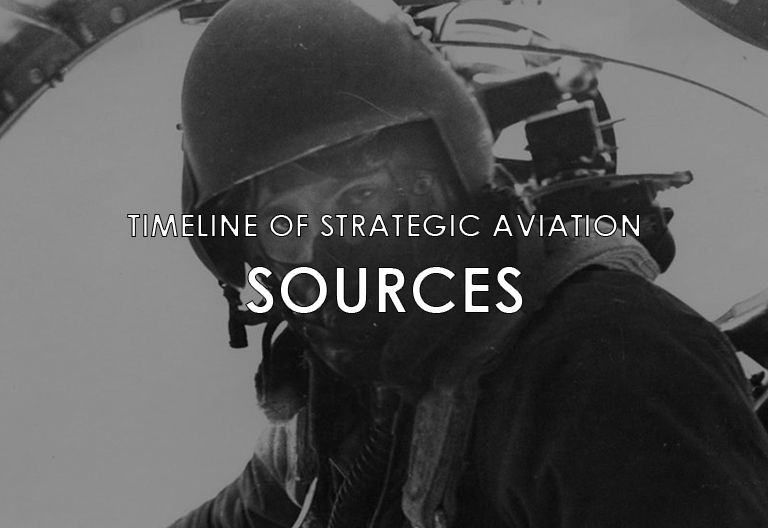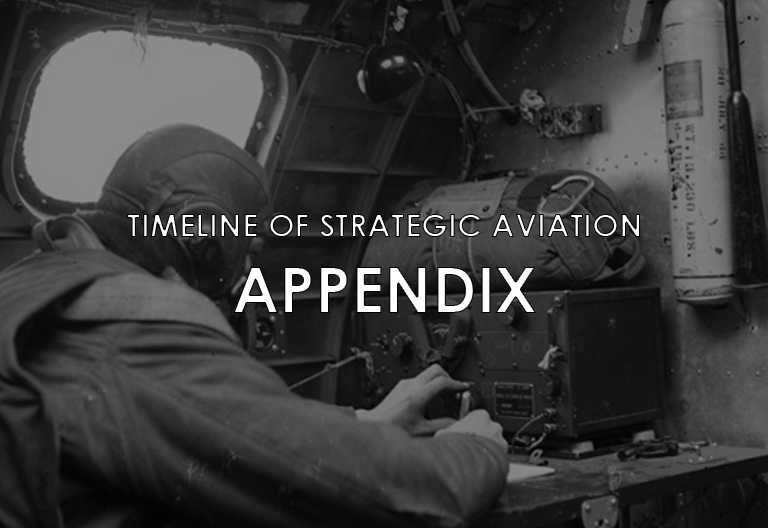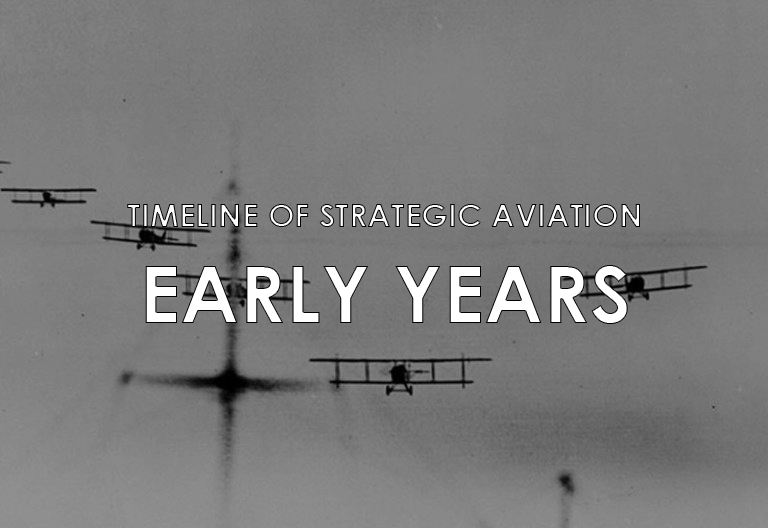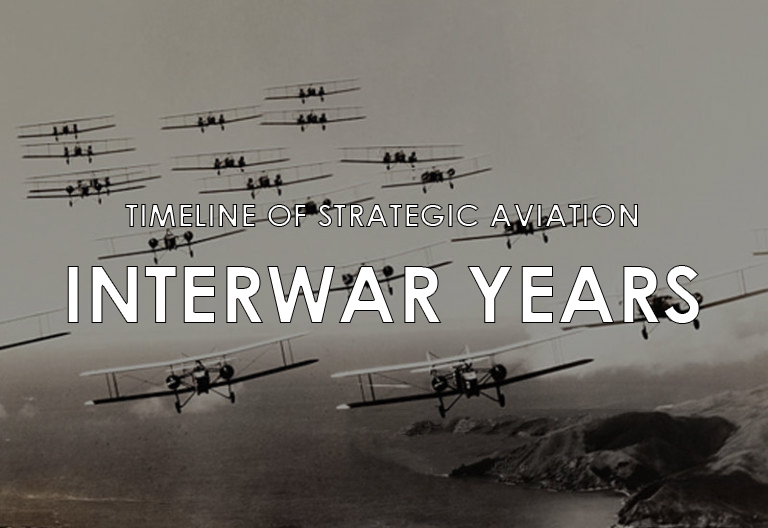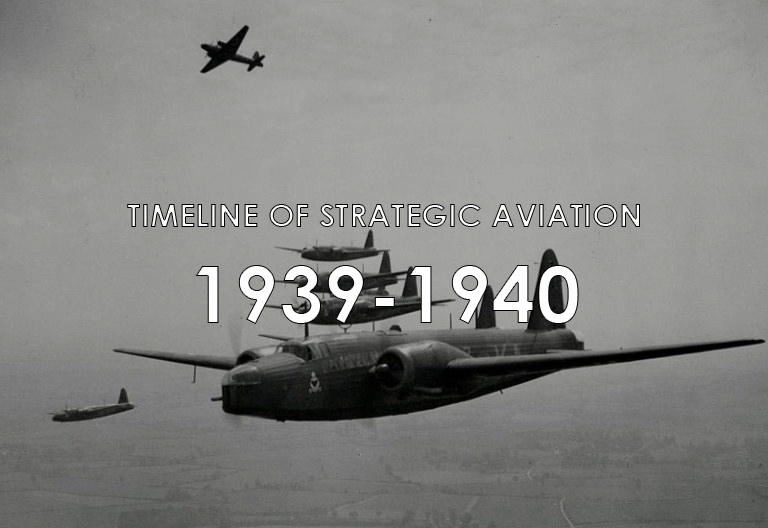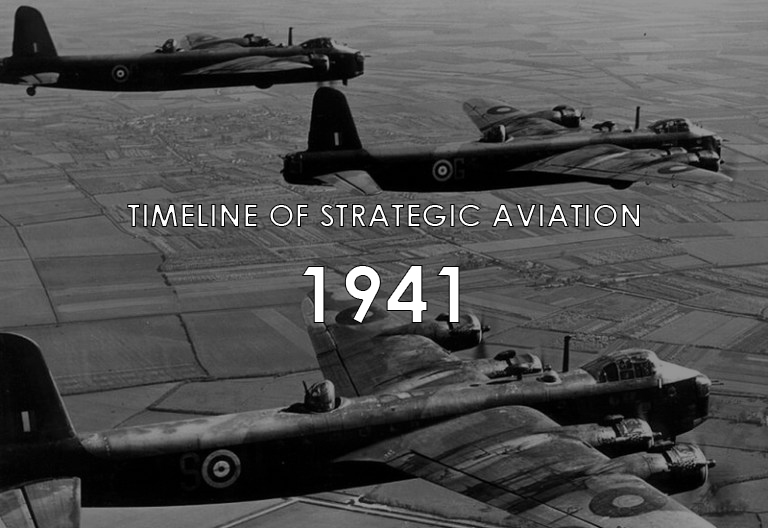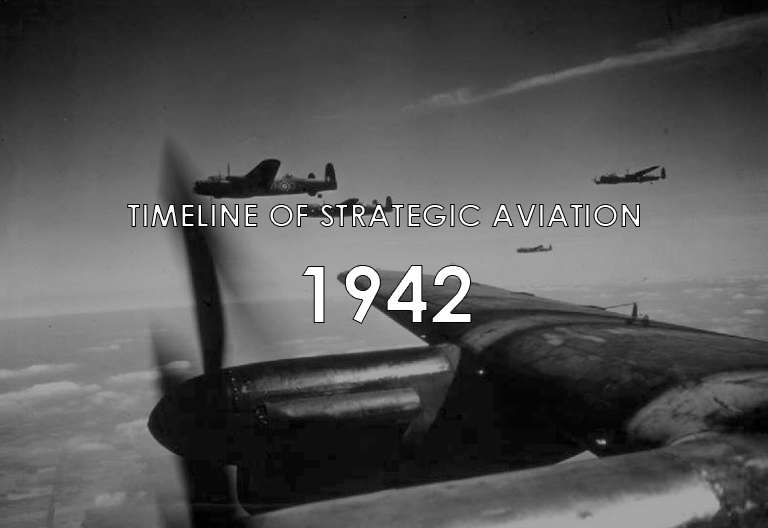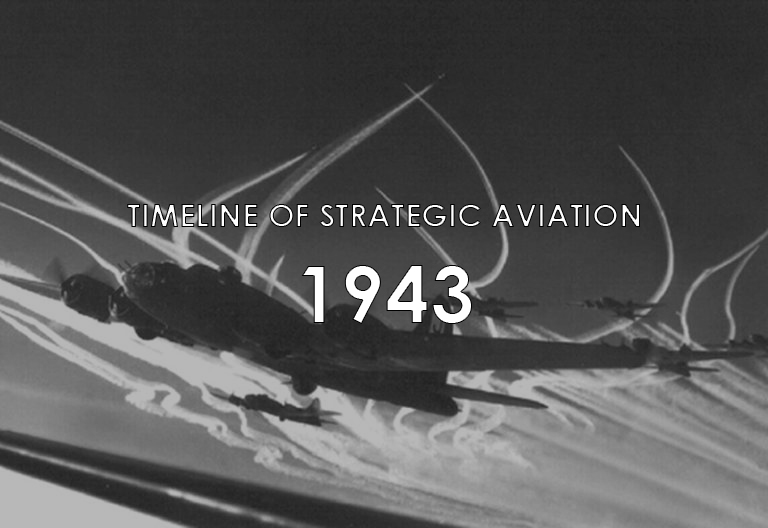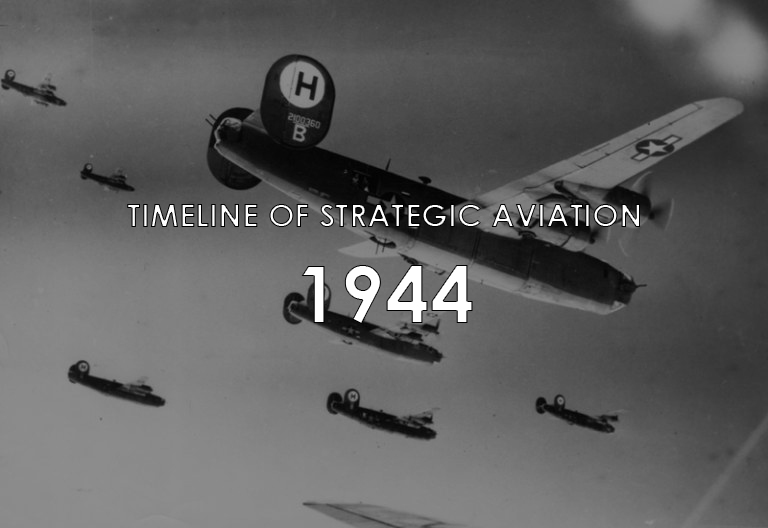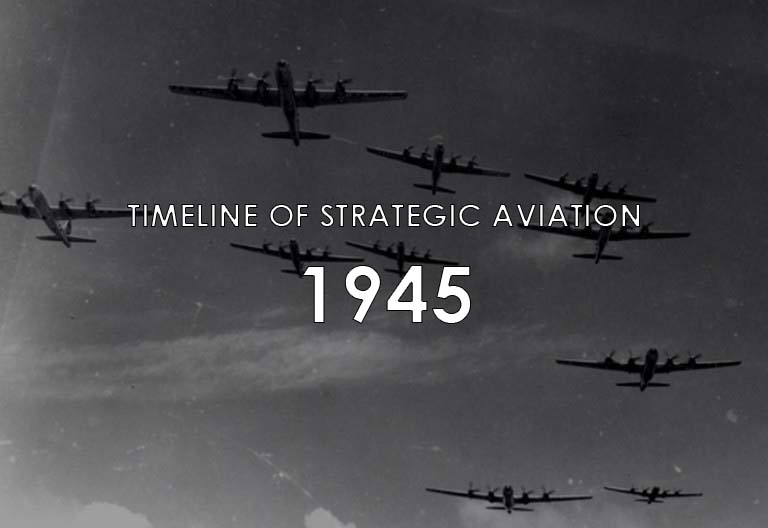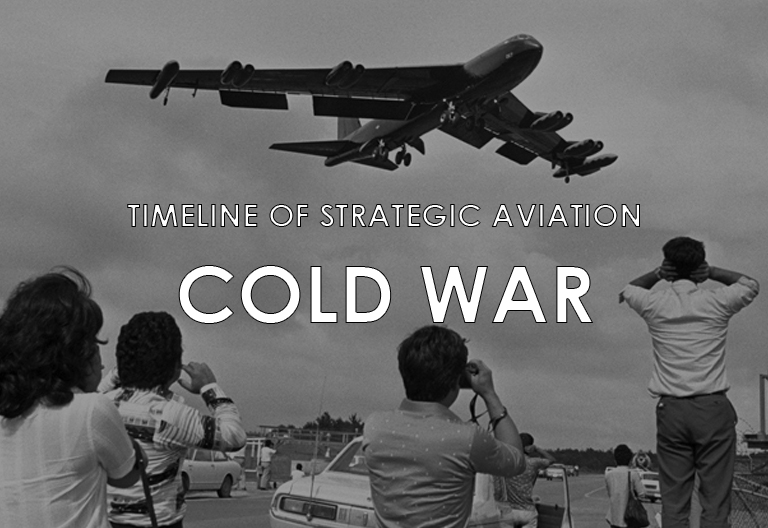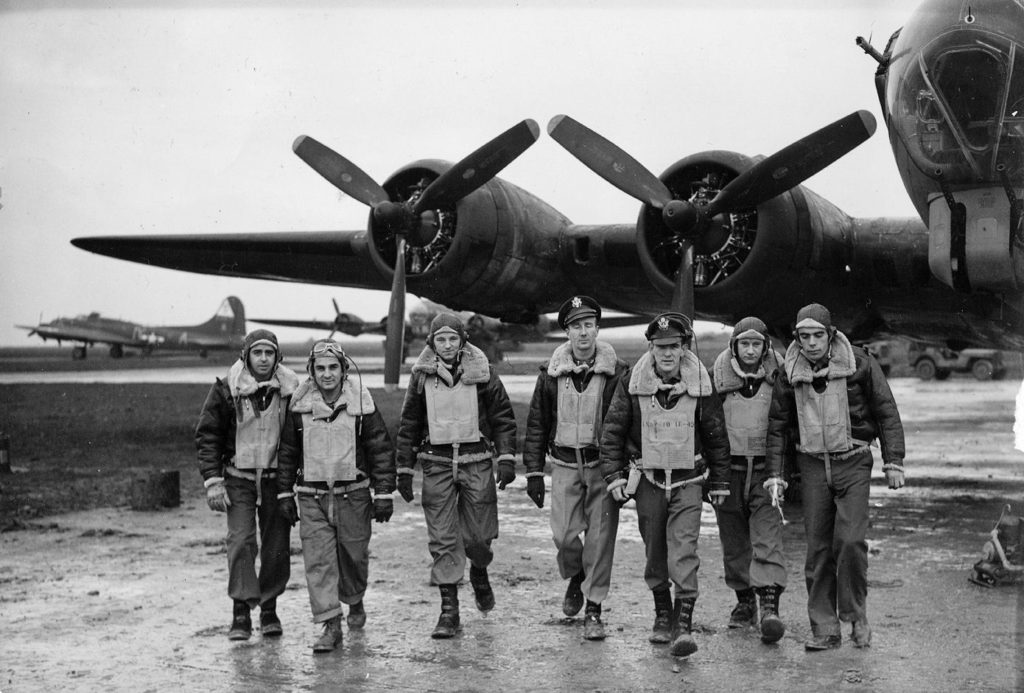
Timeline of Strategic Aviation
Gerad Allen Blume
Rarely in the course of military history does an invention so drastically alter the manner in which nations conceive and wage war as the airplane. Now a staple of modern life, it is easy to forget just how revolutionary this young invention truly is. Only the handheld firearm can lay claim to a greater impact on military history, and even then, like the automobile, firearms were more-so a natural development of evolution than a true revolution. When Wilbur and Orville Wright filed a patent for their 1903 Flyer on 22 May 1906, it was not just the machine itself they enshrined but the manner in which they had succeeded in controlling pitch, roll, and yaw. Regardless of whether or not this act was prudent, the object of the Wrights’ patent warrants awe: this is more than simply succeeding where others had failed, this is the scientific discovery that allows for all heavier-than-air flight to this day. Having built upon this initial spark, the speed at which the airplane came of age is staggering. When Howard Hughes picked up Orville Wright for his last known flight on 17 April 1944, Hughes had just set an airline record for flying from Burbank, California to Washington, DC in just under seven hours. When Hughes guided the old man to the cockpit and gave him the controls, Wright could only murmur that his first flight was shorter than the wingspan of the Lockheed Constellation he was currently flying. Such was the progress of a mere 40 years.
And a bloody 40 years it was.
There was never any question as to the airplane’s military practicality; after all, balloons and dirigibles had effectively served as reconnaissance platforms since the American Civil War. Still, it was the Great War that gave birth to military aviation as we currently conceive it. Rickety wood and fabric kites, struggling to hold the weight of engine and man, ultimately gave way to the first fighters, transports, and bombers, and it was upon this last variant that the airplane’s role in military history hung its star. Both on land and sea, the war in Europe had been a stalemate-of-wills where, in the end, it was not artillery shells or poison gas but economic ruin that finally brought the Great War to a halt. As if the sheer horror of early-modern combat had not been enough, the sacrifices of millions of men had been completely overruled by the will – or lack thereof – of nations’ civilian participants. As such, the logic behind strategic airpower theory in the Interwar years became inescapable: if it is the people who are responsible for upholding the military, then it is they who should be targeted with the greatest ferocity: remove these supports and such bloody conflicts as the Great War will no longer have a foundation on which to stand.
This is the essence of strategic bombardment.
And it should be noted that strategic bombardment is the raison d’être of military airpower. If airpower alone can bring about the end of wars, then logically airpower should not be beholden to armies and navies. As such, it is the strategic bomber, and only the strategic bomber, that could justify the existence of an independent military aviation service. While other aircraft, be it transport, fighter, light bomber, or reconnaissance aircraft, can define their purpose based on the needs of those on the ground, only the strategic bomber can serve a purpose wholly unto itself. The degree to which such an argument is valid may be up for debate, but the fact remains that, at least until the Cold War, this was the genesis of modern-airpower. Even without a conflict to put the theories to the test, the Interwar concepts of airpower clearly defined the expectations of modern military aviation. Ironically, but perhaps fittingly, the Second World War has been the one instance where these theories were put to the test, at least at a scale on par with which they were originally intended.
One might even argue that the strategic bomber can only truly exist in the freedom of total war. The atom bomb so quickly and decisively brought an end to conflict without restriction that the strategic bomber ultimately became a weapon without a purpose. Consistently over Korea and Viêt Nam the strategic bomber was held at bay, unleashed by politicians and generals upon targets of interdiction who nevertheless hoped in vain for strategic results. If the enemy’s means of production and will-to-fight were products of an enemy off-limits to bombardment, then the only strategic result that could be hoped for was an occasional cease-fire. Much like those veterans of the Great War, the servicemen of these conflicts could only lament how such monsters of destruction were withheld while the rank-and-file suffered – the difference not being one of capability but willingness. In today’s world of asymmetrical warfare the strategic bomber’s role has become even more clouded. How can one destroy an enemy’s ability to wage war when the enemy is not another nation but an ideology? Likewise, how can one destroy an enemy’s will-to-fight when so much is predicated upon the fickle public sentiment of your own people? In a perfect world, a strategic bombing operation could remove a threat with as much skill and precision as a surgeon removing a tumor. And, while there may come a day where such warfare is possible, thus far strategic bombardment has not come close to such accuracy. Morally the debate over the legitimacy of targeting civilians in war is as old as time itself, to which airpower’s innate coldness is a major factor in regard to public sentiment as, after all, while no war is popular, few weapons are as blunt and remorseless as a bomb.
This timeline originally began as a way to sort my notes for a possible future book. And, since this is a subject with many interested parties, I decided to clean up my work and post some of my notes online. Since then, the timeline has become an entity unto itself – which is fine by me as long as my work is acknowledged.
Due to the length of the timeline it has become necessary to break it down into eras. While the focus of this work is the evolution of strategic bombing theory, doctrine, and technology, noting major dates thereof, some developments outside of strategic aviation are also noted. Of these, political ideas about the proper role of airpower, and journalism’s long history of playing fast and loose with facts, are of particular importance in regard to shaping public opinion of bombardment practices.
Relevant statistics are given whenever possible. These figures are limited to what data is available to me at the time. Granted proper statistics, strikes are quantified over the amount of relevant aircraft launched, aircraft effective (that is, how many carried out the mission goals), and the rates at which aircraft were lost or failed to carry out their mission (for a lack of a better term, the latter are categorized as aborts). Due to circumstances outside of my control, there may be some overlap between aborted aircraft and aircraft lost in action. Aerial victory statistics are largely avoided unless I can confirm victory claims against the opposition’s recorded losses. Unfortunately, such fact-checking is often outright impossible in regard to communist China, North Korea, and Viêt Nam.
Photographs are not credited as I have endeavored to use public domain images. If I have intruded on anyone’s intellectual property, I sincerely apologize. Individual aircraft of note are referenced by serial number for the benefit of those who may wish to research the technical aspects therein. Aircraft names are noted whenever possible, though some are by necessity referenced by squadron codes or callsigns. Aircraft that are currently on museum display are highlighted where applicable. Historical documents and photo essays are linked throughout the timeline and highlighted once I have had the time to transcribe them. Full names and proper ranks and titles are used to the best of my available knowledge. Native spellings are used whenever possible, italicizing non-English words.
This is a work in progress so check in from time to time to see new material.
If any mistakes are found, be sure to contact me here.
Last Updated: 7 January 2025

